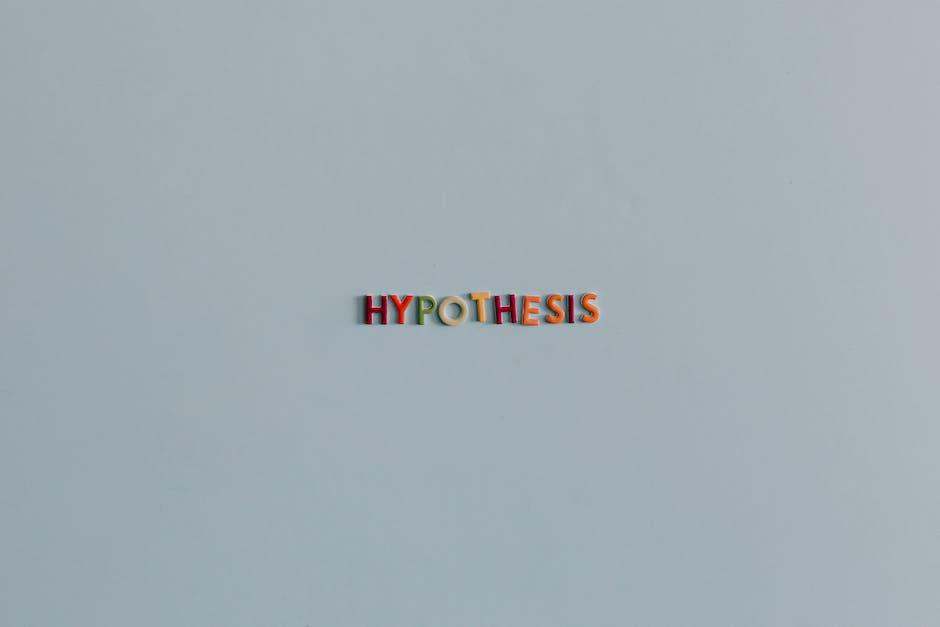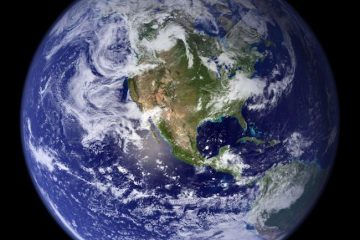Nestled within the vast tapestry of Earth’s intricate ecosystems lies a theory that sparks wonder and contemplation – the Gaia Hypothesis. This captivating concept intertwines the delicate balance of our planet’s physical geography with the harmonious dance of living organisms. Join us on a journey of discovery as we delve into the rich landscapes of Gaia Hypothesis geography, unraveling the mysteries of interconnectedness between Earth and life itself. Welcome to a world where geography transcends mere landforms and embraces the essence of Gaia’s living, breathing presence.
Table of Contents
- Exploring the Intriguing Connection Between Gaia Hypothesis and Geography
- Unveiling the Impact of Gaia Hypothesis on Ecosystem Stability
- Analyzing the Role of Feedback Mechanisms in Gaia Hypothesis within Geographic Contexts
- Practical Applications: Implementing Gaia Hypothesis Concepts for Sustainable Land Management
- Q&A
- Closing Remarks
Exploring the Intriguing Connection Between Gaia Hypothesis and Geography
In a world where nature and geography intertwine, the Gaia Hypothesis emerges as a captivating theory that delves into the intricate relationship between Earth as a whole and its geographical components. This hypothesis proposes that the planet functions as a single, self-regulating organism, where living organisms and their inorganic surroundings coevolve to maintain environmental conditions suitable for life. The interplay between Earth’s biotic and abiotic factors creates a fascinating web of connections that shape our landscapes and ecosystems in ways beyond imagination.
As we navigate the realm of geography through the lens of the Gaia Hypothesis, we uncover thought-provoking insights into how natural systems collaborate to sustain life on Earth. From the vast oceans teeming with diverse aquatic life to the lush forests breathing life into the atmosphere, every geographical feature plays a crucial role in maintaining the delicate balance of our planet. By acknowledging this interconnectedness, we gain a deeper appreciation for the intricate symphony of processes that shape the world around us. Let’s embark on a journey where geography transcends mere landforms and transforms into a vibrant narrative of Gaia’s ever-evolving story.
Unveiling the Impact of Gaia Hypothesis on Ecosystem Stability
The Gaia Hypothesis proposes that the Earth functions as a self-regulating system, maintaining conditions suitable for life to thrive. This concept suggests that the biosphere, atmosphere, hydrosphere, and geosphere interact in a complex, interdependent manner to sustain life on our planet. By viewing Earth as a living organism, with all its components working together harmoniously, the Gaia Hypothesis has profound implications for our understanding of ecosystems and their stability.
<p>One key aspect of the Gaia Hypothesis is the idea that living organisms play a vital role in shaping their environment and maintaining a balance that supports life. From regulating atmospheric composition to influencing climate patterns, **organisms contribute to the overall stability** of ecosystems. This holistic perspective underscores the intricate relationships between living organisms and their surroundings, highlighting the interconnectedness of all forms of life on Earth.</p>
Analyzing the Role of Feedback Mechanisms in Gaia Hypothesis within Geographic Contexts
In the fascinating realm of the Gaia hypothesis, the interplay of feedback mechanisms unveils a mesmerizing narrative within geographical contexts. Picture a dynamic ecosystem where intricate feedback loops orchestrate a harmonious dance between living organisms and their environments. These feedback mechanisms serve as the silent architects of balance, subtly shaping landscapes and influencing the very fabric of our planet’s geography.
One compelling aspect to explore is how feedback mechanisms in the Gaia hypothesis manifest differently across diverse geographic settings. From lush rainforests to arid deserts, each ecosystem crafts its unique symphony of feedback loops, showcasing the resilience and adaptability of the Earth’s interconnected systems. By unraveling these geographical variations, we gain profound insights into the intricate web of life on our planet, shedding light on the profound mysteries that govern our natural world. Let’s delve deeper into these subtle yet powerful interactions that define the Gaia hypothesis within the tapestry of geography.
Practical Applications: Implementing Gaia Hypothesis Concepts for Sustainable Land Management
Exploring the Gaia Hypothesis concepts in the context of sustainable land management opens up a world of innovative possibilities. One practical application involves the integration of ecosystem diversity to enhance soil fertility and biodiversity. By mimicking natural processes and fostering symbiotic relationships between different organisms, land managers can create self-sustaining ecosystems that promote resilience and productivity.
<p>Another way to implement Gaia Hypothesis principles is by embracing regenerative agriculture practices. This approach focuses on restoring and enhancing ecosystem health through techniques such as crop rotation, cover cropping, and minimal tillage. By nurturing the interconnectedness of all living organisms within a specific landscape, land stewards can nurture the land's ability to self-regulate and thrive sustainably over time.</p>Q&A
Q: What is the Gaia hypothesis in geography?
A: The Gaia hypothesis in geography proposes that the Earth is a living organism where all its components interact to maintain a stable and optimal environment for life to thrive. This theory suggests that the Earth’s physical landscape, atmosphere, and ecosystems are interconnected and work together as a self-regulating system.
Q: Who developed the Gaia hypothesis?
A: The Gaia hypothesis was developed by scientist James Lovelock and biologist Lynn Margulis in the 1970s. They proposed the idea that the Earth functions as a single, self-regulating system akin to a living organism.
Q: How does the Gaia hypothesis impact geography?
A: The Gaia hypothesis impacts geography by emphasizing the interconnectedness of Earth’s processes and systems. It encourages geographers to view the planet as a holistic entity where human activities and natural forces are interdependent and affect the overall health of the Earth.
Q: What are some criticisms of the Gaia hypothesis in geography?
A: Some criticisms of the Gaia hypothesis in geography include the anthropocentric view that humans are central to Earth’s processes, the lack of concrete evidence to support the idea of Earth as a self-regulating organism, and the challenge of incorporating Gaia theory into traditional geographical models.
Q: How can the Gaia hypothesis influence future geographical research and practices?
A: The Gaia hypothesis can influence future geographical research by promoting interdisciplinary studies that integrate natural and social sciences to understand the complex interactions between Earth systems and human activities. It can also lead to the development of sustainable practices that consider the Earth as a dynamic, living entity in need of protection and preservation for future generations.
Closing Remarks
As we conclude our exploration of the Gaia hypothesis in geography, we’ve delved into the interconnectedness of Earth’s systems and the intricate balance that sustains life on our planet. From the intricate web of ecosystems to the dynamic interactions between living organisms and their environment, the Gaia hypothesis offers a unique perspective on our world.
By considering Earth as a self-regulating organism, we are reminded of the importance of preserving and respecting the delicate equilibrium that supports all life forms. As we navigate the ever-changing landscape of environmental challenges, may we draw inspiration from the Gaia hypothesis to foster a deeper appreciation for the interconnectedness of all living things.
Join us in our continued journey of discovery as we unravel the mysteries of our planet and strive to coexist harmoniously with nature. Together, let’s embark on a quest to protect and nurture the Gaia hypothesis’s vision of a thriving, interconnected Earth for generations to come. Thank you for joining us on this enlightening exploration.



0 Comments